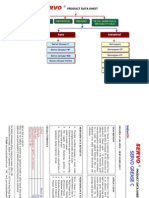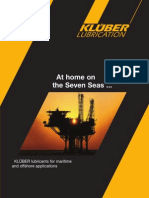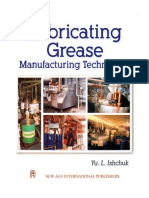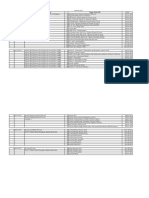0 ratings0% found this document useful (0 votes)
3 viewsTraining Report File
Training Report File
Uploaded by
singhharshit6615Training report file
Copyright:
© All Rights Reserved
Available Formats
Download as DOCX, PDF, TXT or read online from Scribd
Training Report File
Training Report File
Uploaded by
singhharshit66150 ratings0% found this document useful (0 votes)
3 views29 pagesTraining report file
Original Title
Training report file
Copyright
© © All Rights Reserved
Available Formats
DOCX, PDF, TXT or read online from Scribd
Share this document
Did you find this document useful?
Is this content inappropriate?
Training report file
Copyright:
© All Rights Reserved
Available Formats
Download as DOCX, PDF, TXT or read online from Scribd
Download as docx, pdf, or txt
0 ratings0% found this document useful (0 votes)
3 views29 pagesTraining Report File
Training Report File
Uploaded by
singhharshit6615Training report file
Copyright:
© All Rights Reserved
Available Formats
Download as DOCX, PDF, TXT or read online from Scribd
Download as docx, pdf, or txt
You are on page 1of 29
Government Polytechnic,
Kanpur
An Industrial Training Report On
Mineral Oil Company, Kanpur
Submitted by:- Saurabh kumar
Enrollment No.:- 21301235200055
Submitted To:- Mr. Rakesh Kumar Gangwar
Duration:- 20-Aug-2023 To 20-Sep-2023
A monthly summer training report submitted in a particular
fulfillment of the requirement for the award of.
Diploma in Chemical Engineering
Content
⮚Acknowledgments
⮚Declaration
⮚Preface
⮚About the Company
⮚About Grease Plant
⮚Types of Grease
⮚Property of Grease
⮚About Mineral Oils
⮚Properties of Mineral Oils
⮚Crude Oils and its constituents
⮚How to find kinematic viscosity
⮚How to find flash & fire point of oils
Acknowledgments
I would like to take this opportunity to express my gratitude
and sincere thanks to my mentor Mr. Vishesh Agarwal who
offered me the chance to explore each and every plant in
the industry. He helped me in coordinating and getting
information from various departmental heads.
I would also like to thank the project guider Mr. Vinod
Sharma for helping me throughout the course of internship,
guiding me and being a constant source of motivation.
Last but not the least, a word of thanks to the management
of Mineral Oil Company for selecting me in their summer
internship program.
With Regards:-
Abhishek Savita
Saurabh kumar
Chhedi lal sahu
Sanjana kashyap
Priya
Declaration
I hereby declare that this project work is an
authentic record of my own work done under the
supervision of my mentor Mr. Vishesh Agarwal
at Mineral Oil Company, Kanpur.
This project work only meant for submission to the
Chemical Engineering Department, Government
Polytechnic, Kanpur as the requirement of one
month industrial training.
All the data used in calculation is correct to based on
my knowledge and observed practically in the plant.
Preface
Industrial training plays the vital role in the progress of
future engineers. Not only does it provide insights about the
future concerned, it also bridges the gap between theory
and practical knowledge. I was fortunate that I was
provided with an opportunity of undergoing industrial
training at Mineral Oil Company, Kanpur. The experience
gained during this short period was fascinating to say the
least. It was a tremendous feeling to observe the different
unit operations and processes. It was over whelming for us
to notice how such a big process plant is being monitored
and operated with proper coordination to achieve desired
result. During my training I realized that to be a successful
chemical engineer one need to put his/her concepts into
action. Thus I hope that this serves as a stepping stone for
me in future and helps me carve a niche for myself in this
field.
About the Company
M/s. Mineral Oil Corporation is a registered partnership firm
manufacturing petroleum specialty and allied products since
1976. One of the partners Dr. B.D.Agarwal Ph.D (Tech) having
46 years experience of research, development, testing and
manufacturing of various petroleum products.
He also received entrepreneurship award of institute trade and
Industrial Development in 1981 by the vice president of India. He
was also selected by the common wealth secretariat IDU London
in 1985 as expert of petroleum products and the another partner
Shri V.C.Agarwal M.Sc (Organic) having 22 years experience of
manufacturing of various petroleum products.
About Grease Plant
Definition:-Grease, thick, oily lubricant consisting of inedible lard, the
rendered fat of waste animal parts, or a petroleum-derived or synthetic
oil containing a thickening agent.
Raw material:-The basic raw materials used in the manufacture of
grease are fats, metallic hydroxides, oils, and additives.
Greases are manufactured by combining three essential components:
base oil, thickener, and additives. Base Oils: Base oil comprises the largest
component of grease, representing 80 – 97% by weight. The choice of
base fluid may be mineral oil, synthetic oil, or any fluid that provides
lubricating properties.
Manufacturing process:-
Process for the manufacture of a metal complex grease composition
comprising the steps of:
(i) Preparing a slurry comprising base oil, water, metal base and
complexing agent, wherein the weight ratio of water:solid in
the slurry is in the range of from 0.15:1 to 1.5:1.
(ii) Applying shear to the slurry at a shear frequency of at least 1,
000, 000 s-1.
(iii) Adding the slurry emerging from step.
(iv) To a C10- C24 saturated or unsaturated fatty acid or derivative
thereof to effect a saponification reaction, the saponification
reaction being carried out at a temperature of at least 80°C.
(v) Remove water from the saponified product resulting from step.
(vi) Heating the product emerging from step.
(vii) At a temperature in the range of from 190 to 230°C.
(viii) Cooling the product emerging from step.
(ix) To a temperature in the range of from 200 to 150°C to form a
metal complex grease composition. The process of the present
invention provides a reduction in the venting time required to
evaporate the water, a reduction in overall batch time, a more
energy efficient manufacturing process and an increase in
productivity.
Types of Grease
Generally are of three types:
1. Calcium Grease: It is one of the most generic purpose
greases produced. Its properties make it suitable for
resistance from water and protection from corrosion. It is not
suitable for high-temperature functioning making it suitable
for industrial, marine, and agricultural applications.
2. Lithium Grease: It is highly viscous and durable grease. It is
great for lubrication for metal-to-metal applications. It also
supports protection against corrosion, extreme weather, and
wear and tear. Its ability to endure high pressure and shock
loads makes it suitable for vehicles and industrial purposes.
3. Aluminum Complex Grease: It has multiple uses, it has
the ability to endure extremely high temperatures, splendid
water resistance, prevention from rust and oxidation, and
great shear durability making it apt for the Food and Beverage
industry as well as the construction and farming industries.
4. Barium Complex Grease: It is considered a high-
performance grease as it has great mechanical stabilizing
properties and is resistant to high operating temperatures. It
is also resistant to varied types of chemicals. Its heavy load-
bearing capabilities make it suitable for aeronautical, marine,
and manufacturing purposes.
5. Bentone (Clay) Grease: It is developed using Bentone
Clay and is thus one of the few clay-based greases. Known as
the non-melt grease as it works great at different
temperatures, offers great protection from wear and tear. It
has water resistance capabilities and is a splendid adhesive.
Bentone grease is typically utilized in steel, mining, and
ceramic industries.
6. Polyurea Grease: Its popularity is justified by its versatile
multi-characteristic abilities. It provides amazing water
resistance, protection from rust and oxidation, prevents
corrosion as well as high-temperature performance making it
pivotal in Steel plants and electric motors.
7. Sodium Grease: It is produced by mixing base oils with
additives and soda soap. It provides great protection from rust
but is poor when it comes to water resistance and oxidation
capabilities. It is often mixed with other greases to produce
better quality grease.
Property of Grease
Grease is a semi-solid lubricant commonly used in various
applications. Some of its properties include:
❖ Lubrication: Grease reduces friction and wear between moving
parts, helping to extend the life of machinery and equipment.
❖ Viscosity: Grease has a semi-solid consistency, which allows it to
adhere to surfaces and provide long-lasting lubrication.
❖ Temperature Resistance: Grease can withstand a wide range
of temperatures, making it suitable for both low-temperature and
high-temperature applications.
❖Water Resistance: Many greases are formulated to repel water,
which is important for outdoor and marine applications.
❖Load-Carrying Capacity: Grease can support heavy loads,
making it ideal for situations where significant pressure or force is
applied to the lubricated parts.
❖ Corrosion Protection: Grease can provide a protective barrier
against rust and corrosion, helping to preserve the integrity of the
components it lubricates.
❖Consistency: Greases come in different consistencies, ranging
from soft to stiff, depending on the application requirements.
❖ Compatibility: It's important to select the right type of grease for
specific applications, as there are various formulations designed for
different purposes, such as automotive, industrial, or food-grade
applications.
❖ Storage Stability: Grease can typically be stored for extended
periods without deteriorating in quality.
These properties make grease a versatile lubricant for a wide range of
machinery.
About Mineral Oils
Mineral oil is a clear, colorless, and odorless liquid derived from
petroleum. It is a type of hydrocarbon oil and is also known as
liquid paraffin, white oil, or paraffin oil. Mineral oil has various
applications, including:
Uses of Mineral Oils
Industrial Use: It is used as a lubricant in machinery and
equipment, as a coolant in electrical transformers, and as a
hydraulic fluid.
Medical and Cosmetic Use: Mineral oil is used in various
skincare and cosmetic products, such as lotions, creams, and
ointments, due to its ability to lock in moisture and prevent
water loss from the skin. It's also used as a laxative in
medicinal preparations.
Food Grade: Highly refined mineral oil is used in the food
industry as a food-grade lubricant for machinery and
equipment and for preserving wooden cutting boards and
utensils.
Veterinary Use: Mineral oil can be administered to animals as
a laxative when constipation is a concern.
Properties of Mineral Oils
♦Viscosity: Crude oil's viscosity varies depending on its
composition. Some types are relatively thin and flow easily,
while others are thick and more viscous.
♦Density: Crude oil has varying densities, which can range
from lighter oils that are less dense to heavier oils that are
denser. This property affects how it flows and is processed.
♦Color: Crude oil can range in color from light yellow to dark
brown or black. The color is indicative of its composition and
impurities.
♦Flammability: Crude oil is flammable and its flashpoint
(the temperature at which it can ignite) varies depending on
the type of crude oil.
♦Sulfur Content: Crude oil can contain sulfur compounds.
Low-sulfur crude oil is preferred for environmental reasons
and is typically more valuable.
♦Boiling Point Range: Crude oil consists of various
hydrocarbons with different boiling points. This range is
important for refining, as it allows for the separation of
different products like gasoline, diesel, and heavier oils.
♦API Gravity: The API (American Petroleum Institute) gravity
is a measure of the density of crude oil compared to water.
Lighter oils have higher API gravities, while heavier oils have
lower API gravities.
♦Chemical Composition: The composition of crude oil
includes hydrocarbons like alkanes, cycloalkanes, and
aromatics, as well as various impurities like sulfur, nitrogen,
and metals.
♦Reservoir Properties: Crude oil reservoirs can have
different properties, such as porosity and permeability, which
affect the ease of extraction.
Crude Oils and its constituents
Crude oil is a complex mixture of hydrocarbons, which are
organic compounds consisting primarily of hydrogen and
carbon atoms. The exact composition of crude oil can vary
significantly depending on its source, but it generally
includes the following types of hydrocarbons and other
components:
Paraffins (Alkanes): These are straight-chain or branched
hydrocarbons with single carbon-carbon bonds. They are
the primary components of crude oil and are known for
their stability. Paraffins are the main constituents of
gasoline.
Naphthenes (Cycloalkanes): These are hydrocarbons with
one or more carbon-carbon bonds in the form of a ring
structure. They are also called cycloalkanes and are found in
various parts of crude oil, contributing to the mid-range
hydrocarbons used in gasoline and diesel.
Aromatics: Aromatic hydrocarbons contain one or more
benzene rings in their structure. Compounds like benzene,
toluene, and xylene fall into this category. Aromatics are
important components of gasoline and are used in the
production of chemicals.
Olefins (Alkenes): Olefins are hydrocarbons with one or
more carbon-carbon double bonds. They are found in
various parts of crude oil and are used in the production of
chemicals and polymers.
Sulfur Compounds: Crude oil often contains sulfur
compounds, which are undesirable due to their
environmental impact and corrosiveness. Low-sulfur crude
oil is preferred.
Nitrogen Compounds: Nitrogen-containing compounds are
present in some crude oils and can lead to issues in refining
processes.
Oxygen Compounds: Oxygen compounds can be found in
trace amounts and are considered impurities.
Trace Metals: Crude oil may contain trace amounts of
metals like nickel, vanadium, and iron. These metals can be
catalyst poisons in the refining process.
Asphaltenes and Resins: These are high-molecular-weight
compounds that can be found in crude oil. Asphaltenes are
heavy and can contribute to sludge formation in pipelines
and equipment.
The specific composition of crude oil varies not only by
source but even within the same oil field. Refineries use
various processes to separate and process these
components into different products, such as gasoline,
diesel, jet fuel, and petrochemical feedstocks. The choice of
crude oil and the refining process also affect the quality and
properties of the final products.
How to find Kinematic viscosity
Kinematic viscosity is a property that describes how a fluid
(such as crude oil) flows under the influence of gravity. It is
a measure of a fluid's resistance to flow and is an important
parameter in the oil and petroleum industry. Kinematic
viscosity is typically expressed in units of square
centimeters per second (cm²/s) or stokes (St).
Calculate the kinematic viscosity using the formula:
Kinematic Viscosity (ν) = Dynamic Viscosity (μ) / Density (ρ)
The resulting value represents how fast the crude oil would
flow under the influence of gravity. Crude oil can have a
wide range of kinematic viscosities, from relatively low
values for lighter, more fluid oils to much higher values for
heavy and viscous oils.
The kinematic viscosity of crude oil is an important
property to measure and understand for several reasons:
Refining: Crude oil contains a mixture of different
hydrocarbons, ranging from light to heavy fractions. The
kinematic viscosity helps determine the composition and
characteristics of the oil. Refineries use this information to
optimize their processes, as different fractions may be used
for various products like gasoline, diesel, or heavy fuel oil.
Quality Control: Kinematic viscosity is a quality control
parameter for crude oil. It can be used to assess the
consistency and purity of a crude oil sample, ensuring that it
meets specifications for a particular application. Variations
in viscosity can indicate impurities or changes in the oil's
composition.
Economic Factors: The market value of crude oil is
influenced by its properties, including viscosity. Lighter, less
viscous crude oils are often more valuable as they are easier
to refine into high-demand products like gasoline.
Measuring kinematic viscosity requires specific
instruments and methods. There are various techniques
available, with the most common ones being the Saybolt
Universal Viscosity (SUV) and Saybolt Furol Viscosity (SFV)
methods, as well as the more modern kinematic viscosity
measurement using the Cannon-Fenske viscometer. Here's
an overview of these methods:
Cannon-Fenske Viscometer (Capillary Tube Method):
● This is a more modern and widely used method for
measuring kinematic viscosity.
● A Cannon-Fenske viscometer is a calibrated glass
capillary tube with a constant diameter. The capillary
tube is filled with the crude oil sample.
● The viscometer is placed in a controlled
temperature bath, typically at 40°C or 100°C.
● The time it takes for the oil to flow through the
capillary tube under gravity is recorded. This time, along
with the tube's dimensions and the density of the crude
oil, is used to calculate the kinematic viscosity in units of
square centimeters per second (cm²/s).
It's important to note that the specific method used for
measuring kinematic viscosity may vary depending on
industry standards, regulations, and the characteristics
of the crude oil being tested. Accuracy in temperature
control and measurement is crucial in these methods,
as viscosity is highly temperature-dependent.
Additionally, proper calibration of viscometers and
adherence to standard procedures are essential for
obtaining reliable results.
Laboratories and facilities that deal with crude oil
analysis often follow established testing protocols and
use specialized equipment to ensure accurate and
consistent measurements of kinematic viscosity.
The Capillary Tube Method, commonly used for
measuring kinematic viscosity, requires specific
equipment for accurate and precise measurements.
The primary equipment includes:
Cannon-Fenske Viscometer (Ubbelohde Viscometer): This
is the core piece of equipment for the Capillary Tube
Method. It is a specialized glass capillary tube viscometer
designed to measure the flow of a fluid through a precisely
calibrated narrow tube. It typically consists of the
following components:
A calibrated glass capillary tube with a uniform bore
diameter, specifically designed for kinematic viscosity
measurements.
A bulb or reservoir at the top of the tube for holding the
sample.
A constant temperature bath or controlled temperature
chamber to maintain a stable and uniform temperature
during the measurement.
Thermometer: A high-precision thermometer is used to
monitor and verify the temperature of the sample and the
viscometer bath. Temperature control is crucial, as
viscosity is highly temperature-dependent. The
thermometer should be accurate to within a fraction of a
degree Celsius.
Sample Container: A container is required to hold the
crude oil sample that will be tested. The sample should
be representative of the oil being analyzed and should
be poured into the viscometer bulb for measurement.
Timing Device: A stopwatch or digital timer is used to
record the time it takes for the oil to flow through the
capillary tube.
Density Measurement Equipment: To calculate
kinematic viscosity, you'll need to measure the density
of the crude oil sample. This may involve a density
meter or hydrometer, which provides the density value
needed for the viscosity calculation.
How to find flash & fire point of oils
The flash and fire points of crude oil are typically
measured using standardized testing methods to
ensure accuracy and consistency. The two most
common methods for determining these points are:
Cleveland Open Cup (COC) Method:
The Cleveland Open Cup method is widely used for
measuring the flash and fire points of crude oil and
other flammable liquids.
Flash Point Measurement: In this method, a small
sample of the crude oil is placed in a specially designed
cup, which is open to the air. An open flame or
electrically heated igniter is positioned above the cup.
The temperature of the sample is gradually increased,
and an ignition source is repeatedly introduced until a
flash is observed.
Fire Point
Measurement: To determine the fire point, the
temperature is further increased after the flash point is
detected. The ignition source is continuously applied,
and the temperature at which the crude oil sustains a
continuous flame is recorded as the fire point.
Pensky-Martens Closed Cup (PMCC) Method:
The Pensky-Martens Closed Cup method is another
common technique for flash and fire point
measurements, offering improved safety by enclosing
the sample during testing.
Flash Point Measurement: In this method, a closed cup
with a small sample of crude oil is sealed, and a test
flame or spark is introduced at regular intervals as the
temperature increases. The flash point is the lowest
temperature at which the ignition source causes a flash
within the closed cup.
Fire Point Measurement: For the fire point, the
temperature is further increased, and the ignition
source is continuously applied. The fire point is reached
when the sample sustains a continuous flame.
You might also like
- Basic GreaseDocument20 pagesBasic Greasefahreez100% (3)
- Iocl PanipatDocument39 pagesIocl PanipatChaitanya BakliwalNo ratings yet
- Experiments in Polymer Science PDFDocument2 pagesExperiments in Polymer Science PDFJoshua0% (1)
- itr1Document13 pagesitr1CHE21PRIYANSHI YADAVNo ratings yet
- Grease 2Document4 pagesGrease 2arunNo ratings yet
- 12 - Chapter 4 PDFDocument26 pages12 - Chapter 4 PDFDarsh LathiaNo ratings yet
- Savsol Oil Internship ReportDocument14 pagesSavsol Oil Internship ReportRohit Choudhary 2No ratings yet
- Reprot On TrainingDocument36 pagesReprot On TrainingMd.Mahbub MorshedNo ratings yet
- Project Report On Mass Balance of RR3 Grade of GreaseDocument116 pagesProject Report On Mass Balance of RR3 Grade of GreaseAkash Dhobale100% (2)
- MOBIL L - Ind - Prod - Summary - 2010 PDFDocument56 pagesMOBIL L - Ind - Prod - Summary - 2010 PDFCorina StanculescuNo ratings yet
- Lubricants For The Manufacturing IndustryDocument20 pagesLubricants For The Manufacturing IndustrynarenjiNo ratings yet
- RAHIL VOCATIONAL TRAINING REPORTDocument28 pagesRAHIL VOCATIONAL TRAINING REPORTvedanshu thakarNo ratings yet
- Final Project T&DDocument43 pagesFinal Project T&DKhawaja UmerNo ratings yet
- IOCL MATHURA TRAINING - My ReportDocument43 pagesIOCL MATHURA TRAINING - My Reportdeepakseth001No ratings yet
- Oil Filter Machine Catalogue - DioDocument19 pagesOil Filter Machine Catalogue - DioOficina BrasilNo ratings yet
- Field Work 2024Document50 pagesField Work 2024namirasherwanyNo ratings yet
- Customer Pulling Schemes For Iindian Oil CoorporationDocument35 pagesCustomer Pulling Schemes For Iindian Oil Coorporationsharma3066334No ratings yet
- Castrol India limited finAL NEERAJ B MITHRADocument30 pagesCastrol India limited finAL NEERAJ B MITHRAneerajbmithra123No ratings yet
- Magnalube Lubricant 0413Document3 pagesMagnalube Lubricant 0413John Melanathy IINo ratings yet
- Sodium Grease Formulation From Waste Engine OilDocument7 pagesSodium Grease Formulation From Waste Engine OilNelson Enrique Bessone MadridNo ratings yet
- Drilling Engineering ReportDocument17 pagesDrilling Engineering ReportRushikesh MundeNo ratings yet
- Venol BrocherDocument4 pagesVenol BrocherYamen BayerNo ratings yet
- Insight Services 1Document50 pagesInsight Services 1kiranmittisilaNo ratings yet
- Lec 24Document6 pagesLec 24Tu LaiNo ratings yet
- Hiranmayee Private LimitedDocument25 pagesHiranmayee Private LimitedBlack berryNo ratings yet
- Best Practice 6.grease Construction and FunctionDocument7 pagesBest Practice 6.grease Construction and FunctionJorge ZegarraNo ratings yet
- Internship ReportDocument29 pagesInternship ReportJo Clayton100% (4)
- Indian Oil Corporation LtdfinalDocument34 pagesIndian Oil Corporation LtdfinalAman KumarNo ratings yet
- Vickers Marine Brochure v14!11!11 LRDocument20 pagesVickers Marine Brochure v14!11!11 LRSam ChengNo ratings yet
- Importance of LubricationDocument14 pagesImportance of LubricationBijendra PrajapatiNo ratings yet
- The Formulation of Automotive LubricantsDocument25 pagesThe Formulation of Automotive LubricantsJoel E Valencia0% (1)
- Report On Summer Vocational Training: Indian Oil Corporation LimitedDocument22 pagesReport On Summer Vocational Training: Indian Oil Corporation LimitedAditya SharmaNo ratings yet
- Grease Lube Oil Blending Plant CompressDocument80 pagesGrease Lube Oil Blending Plant Compresssergeiivan100% (1)
- Industrial Lubricants - EniDocument2 pagesIndustrial Lubricants - EnithompsonNo ratings yet
- Productivity From The Ground Up: Solutions and Services For Oil and Gas Exploration and ProductionDocument2 pagesProductivity From The Ground Up: Solutions and Services For Oil and Gas Exploration and ProductionzirimiaNo ratings yet
- Shell Morlina BL: Special Application Bearing & Circulating OilsDocument2 pagesShell Morlina BL: Special Application Bearing & Circulating Oilserfan kurniawanNo ratings yet
- Anjul VermaDocument25 pagesAnjul VermaSumitNo ratings yet
- Long-Life L 1000Document1 pageLong-Life L 1000Nublan HopkinzNo ratings yet
- GREASEDocument12 pagesGREASEKarthikeyanNo ratings yet
- FFO Hard Copy 003Document13 pagesFFO Hard Copy 003rajuupathareNo ratings yet
- LUBE OIL (Project)Document26 pagesLUBE OIL (Project)asiyajamadar74No ratings yet
- GreasesDocument11 pagesGreasesRamakrishnan NatarajanNo ratings yet
- WWWDocument56 pagesWWWChaiwat PhollookinNo ratings yet
- LubricantsDocument14 pagesLubricantsbheem04172006No ratings yet
- TERM PAPER ON (What Are Essential Properties of Lubricants and Types Used in Industries.)Document13 pagesTERM PAPER ON (What Are Essential Properties of Lubricants and Types Used in Industries.)Raushan JhaNo ratings yet
- The Castrol Range of Industrial Lubricants High - 1Document40 pagesThe Castrol Range of Industrial Lubricants High - 1Shan Rana100% (1)
- Goodness1 045855 (Recovered)Document44 pagesGoodness1 045855 (Recovered)Moses IdokoNo ratings yet
- Flat Belt Type Oil SkimmerDocument15 pagesFlat Belt Type Oil SkimmerNikesh More100% (1)
- Iocl 1Document80 pagesIocl 1Rishi KumarNo ratings yet
- UntitledDocument28 pagesUntitledapi-133947076No ratings yet
- 5 Key Factors For Lubricant SelectionDocument12 pages5 Key Factors For Lubricant SelectionMan HumanNo ratings yet
- Currently PicsDocument63 pagesCurrently PicsNikunjNo ratings yet
- The Re-Refining of Used Lubricant OilDocument25 pagesThe Re-Refining of Used Lubricant OilriteshNo ratings yet
- Preparation of Maleinized Castor Oil (MCO) by Conventional Method and It's Application in The Formulation of Liquid DetergentDocument12 pagesPreparation of Maleinized Castor Oil (MCO) by Conventional Method and It's Application in The Formulation of Liquid DetergentedreamerNo ratings yet
- LubricantsDocument5 pagesLubricantsShuvanjan Dahal100% (1)
- Petrof Refining TechnologiesDocument9 pagesPetrof Refining TechnologiesvaraduNo ratings yet
- Cong Nghe San Xuat Dau Boi Tron PDFDocument239 pagesCong Nghe San Xuat Dau Boi Tron PDFMinh Hai RungNo ratings yet
- Lubricating OilDocument24 pagesLubricating OilShyam YadavNo ratings yet
- Lubrication Tactics for Industries Made Simple, 8th Discipline of World Class Maintenance Management: 1, #6From EverandLubrication Tactics for Industries Made Simple, 8th Discipline of World Class Maintenance Management: 1, #6Rating: 5 out of 5 stars5/5 (1)
- Machinery Oil Analysis & Condition Monitoring : A Practical Guide to Sampling and Analyzing Oil to Improve Equipment ReliabilityFrom EverandMachinery Oil Analysis & Condition Monitoring : A Practical Guide to Sampling and Analyzing Oil to Improve Equipment ReliabilityRating: 3.5 out of 5 stars3.5/5 (5)
- Isolation and Purification of Protein PPSDocument26 pagesIsolation and Purification of Protein PPSHamid HeidariNo ratings yet
- Classification and Characterization of Crude Oil: Chapter 2)Document71 pagesClassification and Characterization of Crude Oil: Chapter 2)Nestor Armando Marin SolanoNo ratings yet
- Lecture 23: Enolates and C-C Bond Formation Enolates and C-C Bond FormationDocument16 pagesLecture 23: Enolates and C-C Bond Formation Enolates and C-C Bond FormationMiguel Divino da RochaNo ratings yet
- CiclobencenoDocument8 pagesCiclobencenoChuck ÜbermenschNo ratings yet
- Nonorganic Ingredient DeclarationDocument2 pagesNonorganic Ingredient DeclarationdiahisnawatiNo ratings yet
- Role of Karela in Diabetes A ReviewDocument10 pagesRole of Karela in Diabetes A ReviewDharmaNo ratings yet
- Mondejar, Jr. Arturo BDocument25 pagesMondejar, Jr. Arturo BJulius PrimaNo ratings yet
- Cellulase Enzyme Production by Streptomyces SP Using Fruit Waste As SubstrateDocument5 pagesCellulase Enzyme Production by Streptomyces SP Using Fruit Waste As SubstrateHamka NurkayaNo ratings yet
- Untitled 1Document4 pagesUntitled 1deepakkr0800% (1)
- Tencel FiberDocument21 pagesTencel FiberImran KhanNo ratings yet
- Personal Identification 4Document17 pagesPersonal Identification 4Hillarthy PerniciousNo ratings yet
- Chapter 4..Document25 pagesChapter 4..dana8599No ratings yet
- Crude Drug ClassificationDocument22 pagesCrude Drug Classificationraj royel100% (1)
- Coconut Coir Pith - A Physicochemical and Thermal CharacterizationDocument34 pagesCoconut Coir Pith - A Physicochemical and Thermal Characterizationbruno barrosNo ratings yet
- Bromelaintitrimetric PDFDocument3 pagesBromelaintitrimetric PDFLusia MagdalenisNo ratings yet
- Biology QuestionsDocument19 pagesBiology Questionsdylan.buckle16No ratings yet
- Test Bank For Introduction To Organic CHDocument19 pagesTest Bank For Introduction To Organic CHClaire TiongsonNo ratings yet
- Ácido TereftalicoDocument9 pagesÁcido TereftalicoIvan GuerreroNo ratings yet
- XII EM HALF YEARLY EXAM 2024Document9 pagesXII EM HALF YEARLY EXAM 2024melwinff11No ratings yet
- Chemistry Year 11 Depth Study: Frank DingDocument7 pagesChemistry Year 11 Depth Study: Frank DingFrankNo ratings yet
- Biochem Lab Activity 1 CarbohydratesDocument8 pagesBiochem Lab Activity 1 CarbohydratesHRS 12 Cindy RagasNo ratings yet
- Material Downloaded From - 1 / 3Document3 pagesMaterial Downloaded From - 1 / 3Prityutpann DeyNo ratings yet
- Drug Discovery From Plant Sources: An Integrated Approach: Mr. A. Sanjeeva KumarDocument16 pagesDrug Discovery From Plant Sources: An Integrated Approach: Mr. A. Sanjeeva KumarsuryaprakashreddycNo ratings yet
- Utilization of Fish Processing Waste: A Waste To Wealth ApproachDocument5 pagesUtilization of Fish Processing Waste: A Waste To Wealth Approachsumaiya rahmanNo ratings yet
- Molecules: Fferent TechniquesDocument14 pagesMolecules: Fferent TechniquesVO KIMCUONG-208No ratings yet
- BME2106 Lecture+1.+Fundamentals+of+Molecules+and+CellsDocument67 pagesBME2106 Lecture+1.+Fundamentals+of+Molecules+and+CellsshanNo ratings yet
- Applications of Neutralization TitrationsDocument22 pagesApplications of Neutralization TitrationsNora BuanNo ratings yet
- Registered Animal FeedDocument38 pagesRegistered Animal FeedRio SetiawanNo ratings yet
- Chem 261 Exam 1 S10Document4 pagesChem 261 Exam 1 S10rrf7No ratings yet

























































































